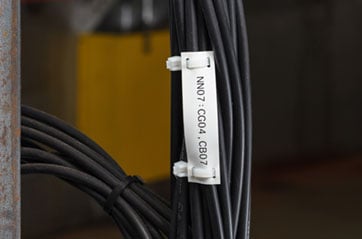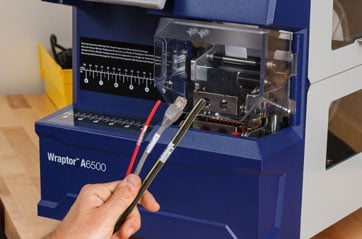Labeling Cables and Wires
Choosing the right wire marker or cable label
Cable and wire labeling is critical in the identification, assembly, and repair of electrical control panels, wire harnesses, and data/telecommunications systems. It is an upfront cost that saves time and labor expenses when changes or repairs need to occur to the systems you work on.
After following the appropriate wire color codes, there are several wire markers and cable labels to choose from, including heat-shrink sleeves, wrap-around cable labels, self-laminating labels, flags, and rigid tags.
Here are four key questions to answer that will help you decide what kind of marker or label is best:
- Is there an industry or customer specification that must be met?
- What environment or chemicals will the labels be exposed to?
- Are you marking the wires before or after termination?
- What is the gauge of wire you are marking?
Learn more about selecting the right wire marker for your application.
Choosing the right wire label maker or cable label printer
Determining the best label printer for the job is another key consideration. When choosing the perfect cable or wire label maker for your project, keep these questions in mind:
- Will you be printing your labels before you leave for the job or in the field?
- How many labels will you need to print each day?
- How wide do you need the labels to be?
- Which label materials do you plan to use?
Bluetooth cable label printers vs. traditional label printers
Portable label printers offer several benefits. When comparing a Bluetooth cable label printer (or Bluetooth wire label printer) like the M211 Portable Bluetooth Label Printer to a traditional portable label printer like the M210 Handheld Label Maker, consider the following:
- I prefer to use a phone keyboard instead of a printer keypad: Yes/No
- It’d be easier for me to design, preview, and print labels using an app: Yes/No
- I’d like the ability to import spreadsheet data and save labels: Yes/No
- A printer with a smaller footprint would make my job easier: Yes/No
If you answered yes to any of these questions, a Bluetooth cable label printer may be a better fit for your needs.
Datacom, Telecommunications & Electrical Labeling Examples:
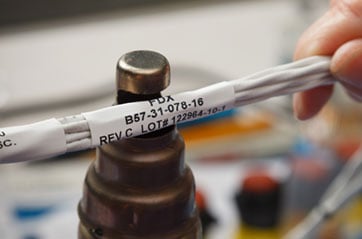
Heat-Shrink Tubing
Ideal for un-terminated wires or cables needing superior abrasion and chemical resistance.
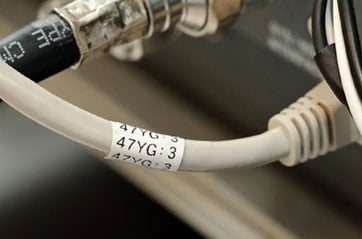
Wrap-Around Labels
Ideal for general marking of terminated or unterminated cables and wires that may be curved or become curved.
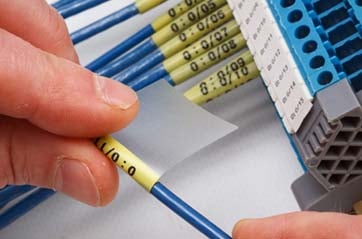
Self-Laminating Labels
Ideal for terminated cables or wires that may need additional abrasion or chemical resistance.
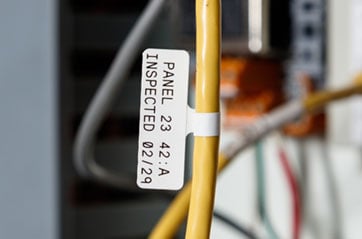
Cable Flags
Ideal for getting larger amounts of data on small diameter wire and cables such as fiber optic cables.
